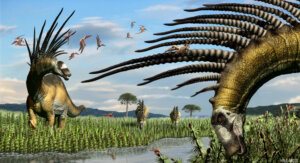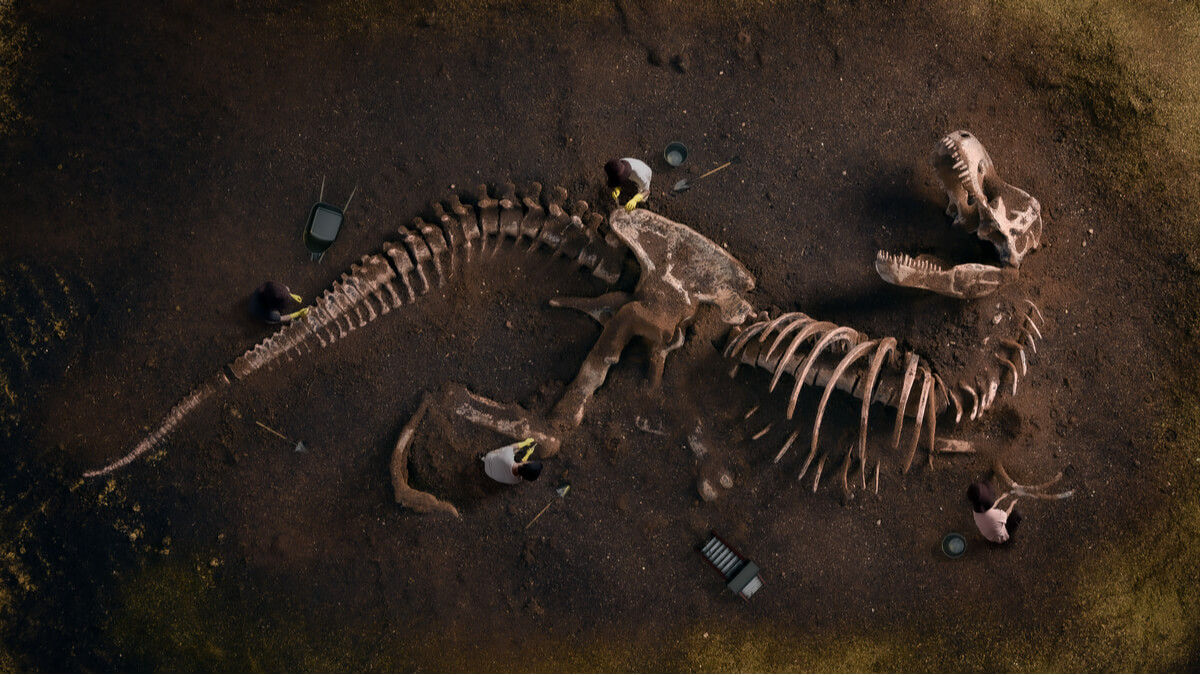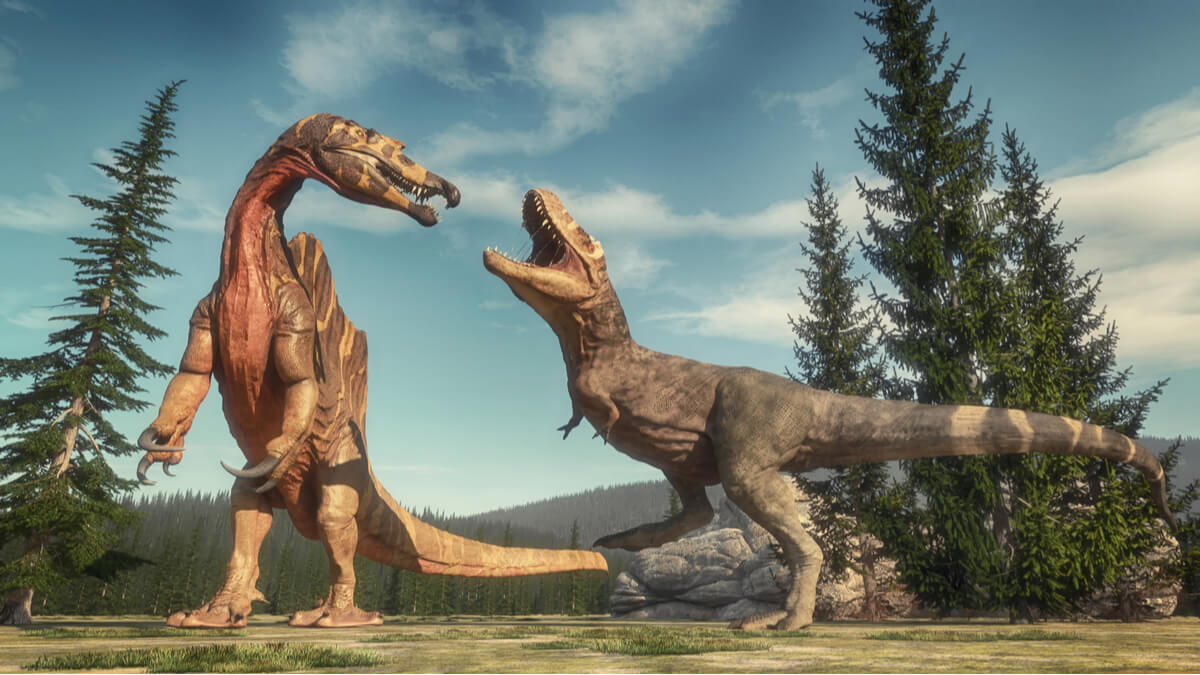When and How Did Dinosaurs Appear?

The origin of the dinosaurs is placed in the Triassic period, the oldest of the Mesozoic Era, which began 230 million years ago and lasted 50 million years more. In that period, both the flora and fauna began to diversify with respect to the previous era. This is how those giant reptiles that we know today as ‘dinosaurs’ appeared.
These titans – terrestrial, marine, winged – came from their ancestors the archosaurs, who were already beginning to show characteristics of current reptiles and some birds. If you want to know more about this topic, read on.
How did the dinosaurs appear?
During the Triassic, among the smaller fauna, insects, scorpions, and freshwater crustaceans began to abound. In the sea, many new genera of invertebrates were appearing. Anyway, at the same time many animal groups kept disappearing, as happened with many amphibians.
This period also marked the beginning of the invasion of the waters by reptiles. For example, phytosaurs. Although their name refers to plants, they were predatory animals.
Another aquatic group were the placodonts, found only in late Triassic deposits. They were quite bulky, with massive bodies and modified shovel-shaped limbs. Some placodonts were endowed with bony plates on the back, similar to a shell like that of turtles, although the number of plates was much higher.

Changes in terrestrial fauna during the Triassic
On land, the fossil rocks of the Triassic contain remains of the most primitive archosaurs, considered ancestors of dinosaurs and pterosaurs. Archosaurs were at first carnivores, coexisting with their herbivorous neighbors, the lepidosaurs or rhinosaurs. Like some modern lizards, they used their tails for balance when running on their hind limbs.
As it evolved, this bipedal posture remained permanent in some species, and for this reason, the hands were adapted to other purposes, such as grasping objects or flying. Paleontologists believe that Eoraptor looks like the common ancestor of all dinosaurs. If so, the first dinosaurs would have been small, bipedal predatory animals.
The appearance of the giants
The most primitive dinosaurs appeared towards the end of the Triassic, about 180 million years ago. Among them were, for example, the following specimens:
- Procompsognatus : a very fast bipedal reptile, which must have weighed approximately one kilogram.
- Plateosaurus : this was the giant dinosaur of the time. It was herbivorous, about 7 meters long, and lived on our continent. It was one of the first reptiles of these dimensions that tried the bipedal position.
The empire of the giants on land
With the dinosaurs comes the Jurassic period, which lasted about 50 million years. For most of this period, animals were represented in a special way by reptiles. On land, dinosaurs were the most abundant. Among them, the following stood out:
- Allosaurus, a gigantic carnivore
- Diplodocus, a 25-meter tall herbivore
- Stegosaurus, a very large dinosaur.
However, not all dinosaurs were of colossal proportions, but there were some that measured a few meters. As is the case today, environmental impositions modulate the size and shape of living things beyond the average.
Aquatic dinosaurs
Reptiles also invaded the seas in those times. The Ictiosaurus and Plesiosaurus were at their most prolific during this period. At the same time, the first turtles and emidosaurs appeared – marine reptiles similar to today’s crocodiles.
Flying dinosaurs
Finally, the dinosaurs began to take to the skies. The small Rhamphorhynchus, for example, was already flying. Pterosaurs, with dimensions that varied between a few centimeters and 9 meters in wingspan, also dominated the air environment.
Their wings were leathery like those of the bat and they didn’t have a keel – a bone present in modern birds – so they weren’t good fliers.

What sources can I turn to to learn more about dinosaurs?
Extinct animals shouldn’t be forgotten. The only way to get humans to remember these giants is to know their legacy from reading and preserving their memory.
The bibliography on these animals is extensive, because they arouse the interest of children and adults alike. Books like Emily Hawkins’ Dinosaur Adventure Atlas are great for youngsters. The Illustrated Encyclopedia of Dinosaurs and Prehistoric Animals, by Dixon D. et al, is also highly recommended for all ages.
Filmography can also be interesting for us to remember dinosaurs, even if they are fantasy-based. Finally, it’s always a good idea to go and visit the different theme parks based around dinosaurs.
All cited sources were thoroughly reviewed by our team to ensure their quality, reliability, currency, and validity. The bibliography of this article was considered reliable and of academic or scientific accuracy.
- Dinosauria [Internet]. Es.wikipedia.org. [cited 24 April 2020]. Available from: https://es.wikipedia.org/wiki/Dinosauria#Or%C3%ADgenes_e_inicios_evolutivos
- Archosauria [Internet]. Es.wikipedia.org. [cited 24 April 2020]. Available from: https://es.wikipedia.org/wiki/Archosauria
- Pérez Más E. Animales Prehistóricos. [Barcelona]: Bruguera; 1978.
This text is provided for informational purposes only and does not replace consultation with a professional. If in doubt, consult your specialist.